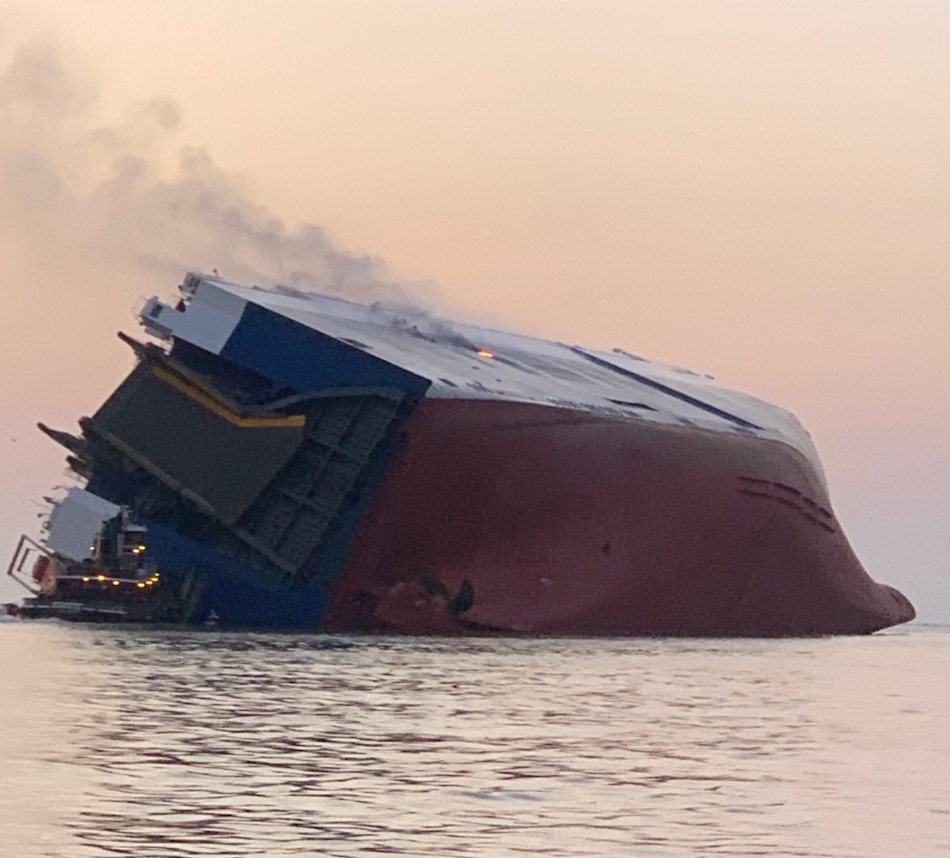(WASHINGTON) — Inaccurate stability calculations caused the capsizing of the vehicle carrier Golden Ray that resulted in $200 million in damage, the National Transportation Safety Board (NTSB) said Tuesday.
The marine accident report details the NTSB’s investigation of the Sept. 8, 2019, capsizing of the roll-on/roll-off Golden Ray as it transited outbound through St. Simons Sound near Brunswick, Ga. All 23 crewmembers and one pilot on board were rescued, including four engineering crew who were trapped in the vessel for nearly 40 hours. Two crewmembers sustained serious injuries.
Golden Ray sustained significant damage due to fire, flooding and saltwater corrosion and was declared a total loss estimated at $62.5 million. An estimated $142 million worth of cargo, including more than 4,100 vehicles, was also lost.

Less than 40 minutes after leaving port, the 656-foot ship began to heel rapidly to port during a 68‑degree turn to starboard. Despite attempts by the pilot and crew to counter the heel, the rate of turn to starboard increased, and the vessel reached a heel of 60 degrees to port in under a minute before it grounded outside of the channel.
The NTSB determined the probable cause of the capsizing of Golden Ray was the chief officer’s error entering ballast quantities into the stability calculation program, which led to his incorrect determination of the vessel’s stability and resulted in Golden Ray having an insufficient righting arm to counteract the forces developed during a turn while transiting outbound from the Port of Brunswick through St. Simons Sound. Contributing to the accident was the lack of effective procedures by G-Marine Service Co. Ltd., the vessel’s operator, in its safety management system for verifying stability calculations.
The NTSB concluded Golden Ray did not meet international stability standards at departure and possessed less stability than the chief officer calculated.
According to the NTSB, after the vessel capsized, open watertight doors allowed flooding into the vessel, which blocked the primary egress from the engine room, where four crewmembers were trapped. Two watertight doors had been left open for almost two hours before the accident. No one on the bridge ensured that the doors were closed before departing the port.
“The circumstances of this accident show that even when transiting in protected waters, watertight integrity is critical to the safety of the vessel and its crew,” the report said. “It is essential that the operator ensure that crews verify that all watertight doors are closed in accordance with safety management system procedures.”
As a result of its investigation, the NTSB issued two safety recommendations to G-Marine Service Co. Ltd.:
• Revise its safety management system to establish procedures for verifying stability calculations and implement audit procedures to ensure its vessels meet stability requirements before leaving the port.
• Revise its safety management system audit process to verify crew adherence to the arrival/departure checklist regarding the closure of watertight doors.
The public docket for the investigation contains more than 1,700 pages of factual information, including interview transcripts, photographs and other investigative materials and is available online at https://go.usa.gov/xFKfT.
– National Transportation Safety Board

